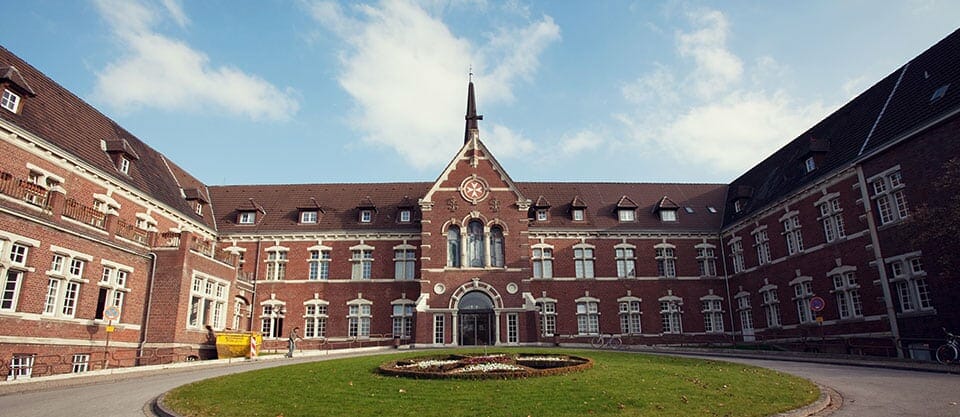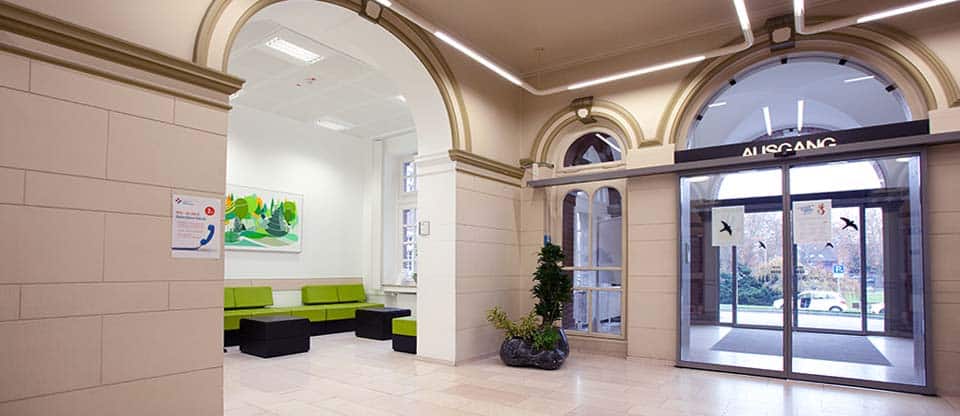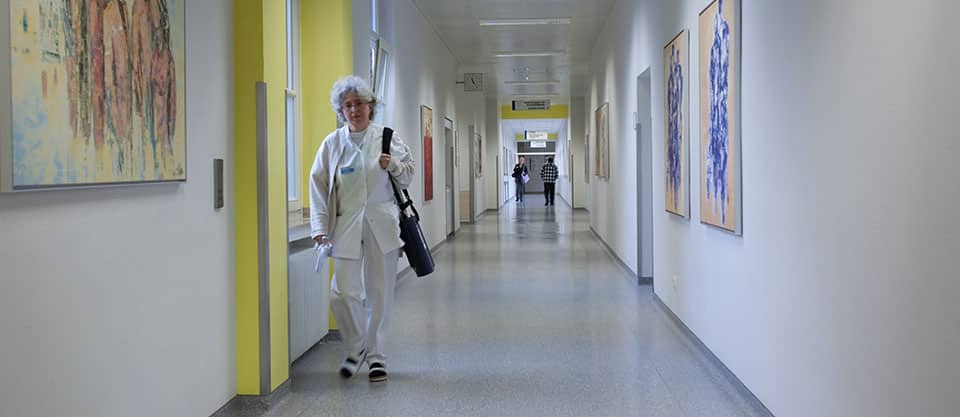The Neurosurgical Center is one of the largest and most modern not only in Germany but also in Europe. The Neurosurgical Center has 3 operating rooms, where more than 2,500 operations are performed annually.
In the vast majority of cases, endovascular and microneurosurgical surgical interventions are performed, some of which are unique in terms of the nature of the pathology, complexity, prevalence of the process, the equipment used, and the results achieved.
For such operations, neurosurgeons have at their disposal:
- 3 operating microscopes and endoscopes
- stereotaxia
- Intraoperative monitoring of brain functions and functions of brain nerves (neuromonitoring)
- Computed neuronavigation, intraoperative ultrasound and intraoperative electrophysiological monitoring of the brain and spinal cord.
- Digital subtraction angiography (DSA)
The main activities of the neurosurgery clinic are skull base and pituitary surgery, spinal surgery, neurooncology, neurotraumatology, intensive care for patients with neurological diseases, as well as surgery of the peripheral nervous system and pain management. The main clinical and operational specialization of the clinic is the treatment of brain tumors (neuro-oncology), neurovascular neurosurgery, skull base and pituitary surgery and spinal surgery.
Operations are performed according to the latest methods of operational planning and resection, using modern technologies such as neuronavigation, resection under fluorescence control, endoscopy, intraoperative neuromonitoring. Based on the latest advances in computer and imaging technology, these techniques allow surgeons to make small, gentle incisions and perform the operation most efficiently.
Neurooncology
In the field of neuro-oncology, clinic doctors use various techniques to identify important functions during operations to remove a brain tumor. To more accurately determine the localization of tumors, a resection technique under fluorescence control is used. In the case of multiple brain tumors, this technique provides a more accurate determination of the boundaries between the areas of the affected and healthy brain tissue, which allows the operation to be performed efficiently and in a sparing mode. According to other therapeutic methods, in order to destroy the remaining single tumor cells, drugs are injected directly into the tissues surrounding the operated tumor.
In addition to surgical interventions, the Clinic of Neurosurgery, together with the Clinic of Radiation Therapy, offers patients such methods of treating brain tumors as focal radiation therapy and radiation surgery.
Qualified specialists in the field of neurovascular neurosurgery treat various diseases of the vessels of the brain and spinal cord in the clinic. However, they use not only surgical therapeutic techniques. So, for example, in order to achieve maximum accuracy of irradiation (in the case of vascular malformation), the clinic closely cooperates with the Gamma Knife Center and with neuroradiologists of the radiological clinic who own catheter technology. The possibility of using surgical combined techniques, catheter technology and point irradiation allows you to draw up an individual treatment plan for each patient.
Spine surgery
The clinic also specializes in spinal surgery using microsurgical, minimally invasive methods, as well as instrumental surgery. Surgical treatment includes not only operations for malformations, vascular and tumor diseases, but also operations on the vertebral discs and diseases caused by bone pathology, which leads to compression of the spinal cord and nerve root.
In cases where prolapsed intervertebral hernia is not subject to endoscopic intervention, specialists perform microsurgical operations. This method avoids large incisions and adhesions and poses a lower risk of nerve fiber damage than when performing the “naked eye” operation.
When performing surgery in the lumbar spine, operative access is provided from the back. As for the methods of operating on hernias in the cervical region, the operations performed through the anterior approach have proved to be the best, which allows avoiding unwanted contact with the spinal cord.
Neurovascular Surgery
Qualified specialists in the field of neurovascular neurosurgery treat various diseases of the vessels of the brain and spinal cord in the clinic. However, they use not only surgical therapeutic techniques. So, for example, in order to achieve maximum accuracy of irradiation (in the case of vascular malformation), the clinic closely cooperates with the Gamma Knife Center and with neuroradiologists of the radiological clinic who own catheter technology. The possibility of using surgical combined techniques, catheter technology and point irradiation allows you to draw up an individual treatment plan for each patient.
Head of the Clinic for Neurosurgery and Spine Surgery
Head of the Interdisciplinary Neurological Center
Video
Request appointment
Useful links














